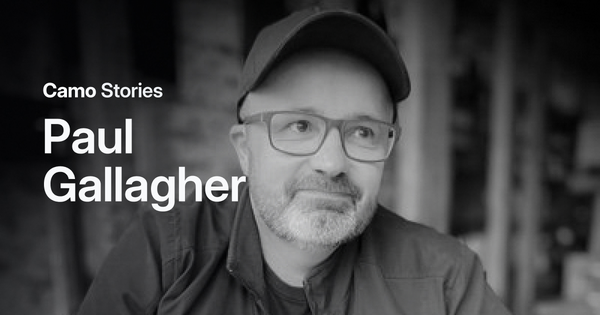Ease of use, ISO and zoom: why Colleen Doyle sent her Brio back

Colleen Doyle is a sign language interpreter. Since transitioning to working from home, Colleen has been using Camo to provide sign language interpretation online. We talked to Colleen about her experience with Camo.
“Before I got Camo, I was using the built-in webcam on my 13 inch MacBook Pro. Like a lot of people, I’ve been working from home much more this year, using video conferencing apps like Zoom and Microsoft Teams to provide live sign language interpretations in university and corporate settings.
“As it became clear that I’d need to continue working from home for a while, I found that having multiple conversations on my 13 inch screen wasn’t working, the screen was just too small for everyday use. So, I got a bigger monitor, which solved that issue, but that created a new problem. Looking at my external monitor, I wasn’t facing the built in webcam anymore, which was unhelpful for clear signing, and if I looked at the camera I could no longer self-monitor my signing, or see the other people in the conversation. I needed an external webcam that was physically closer to my external monitor, so I started looking into alternative webcam options.
“As you know, you can’t find webcams right now, they’re all sold out, or they’re overpriced due to demand. Somehow, I did manage to get hold of two webcams. I ordered a very cheap webcam on Amazon first, but there was no way to adjust the lighting, so it washed me out and made me look like Casper the friendly ghost. I also ordered a $200 Logitech Brio, but I found out about Camo while it was shipping, and as soon as I tried Camo I knew I wouldn’t even need to open the box when it arrived. I did try it, but I preferred Camo, so I sent the Brio straight back.
“I also tried a competitor product that just didn’t work, it froze all the time, and I couldn’t understand what I was doing wrong, as everyone else online seemed to be saying it was great. I saw an article comparing Camo favourably with the competitor I was using, and I thought, $40 a year is really not that much, so it’s worth a try.
“The difference between Camo and other options was night and day. The setup was really easy, and the interface offered much better controls than any other option. Before, I had to have a light shining directly on my face to be well lit, but now I’ve put the light back where it was, and I adjust the ISO in Camo Studio to get the lighting in the picture just right. I love having the ability to zoom. I live in a very small apartment and many webcams seem to give a huge field of view, which meant that there were distracting things visible in my background. With Camo, I can just zoom in to the area I want to show. $200 webcams can’t do that, it’s a game-changer.
“I was surprised by how easy Camo was to use. When I first read about rigging an old phone to be a webcam, it seemed like I might need a lot of supplies, but actually, it was really easy to use. It’s so simple, and the setup was great. For me, it's a “set it and forget it” thing, I have the iPhone I’m using set up on a tripod, I have all my settings ready in Camo Studio, so I can just plug it in and go.”


